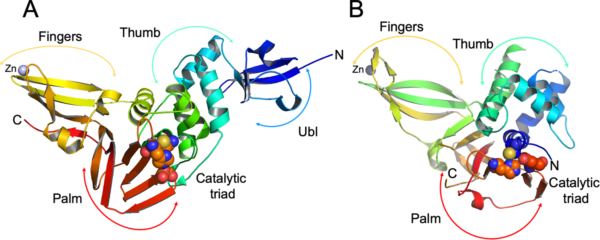Introduction:
Toll-like receptors (TLRs) and IL-1 receptors (IL-1Rs) are essential components of the innate immune system, playing a vital role in detecting pathogens and initiating immune responses. These receptors are key players in recognizing pathogen-associated molecular patterns (PAMPs) and damage-associated molecular patterns (DAMPs), triggering a cascade of immune responses. In this blog post, we will explore the remarkable functions of Toll-like and IL-1 receptors, shedding light on their role in innate immunity, inflammation, and potential therapeutic applications.
Understanding Toll-like Receptors:
Recognition of Pathogens:
Toll-like receptors are located on the surface of various immune cells and endosomal compartments. They recognize a wide range of PAMPs, including bacterial lipopolysaccharides, viral nucleic acids, and fungal cell wall components. By binding to these microbial structures, TLRs initiate signaling pathways that lead to the activation of immune responses and the production of cytokines, chemokines, and interferons.
Innate Immunity and Inflammation:
Toll-like receptors play a central role in innate immunity, acting as the first line of defense against invading pathogens. Upon activation, TLRs stimulate the production of pro-inflammatory cytokines, promoting the recruitment and activation of immune cells. This robust immune response helps to eliminate pathogens and initiate tissue repair processes. However, dysregulation of TLR signaling can contribute to chronic inflammation and autoimmune diseases.
Therapeutic Implications:
The role of Toll-like receptors in immune responses has led to significant interest in their therapeutic potential. Researchers are exploring TLR agonists and antagonists as potential immunomodulatory agents for the treatment of infectious diseases, cancer immunotherapy, and allergic conditions. Modulating TLR signaling holds promise for targeted therapies that can enhance or suppress immune responses in specific contexts, improving patient outcomes.
Understanding IL-1 Receptors:
Inflammatory Cytokines:
Interleukin-1 (IL-1) is a family of cytokines that play a crucial role in inflammation and immune responses. IL-1 receptors are expressed on various cell types and are capable of recognizing IL-1α and IL-1β, pro-inflammatory cytokines involved in mediating the acute inflammatory response. IL-1 signaling triggers a cascade of events, including the production of other cytokines, chemokines, and the activation of immune cells.
Inflammatory Disorders and Autoimmune Diseases:
Dysregulation of IL-1 signaling has been implicated in various inflammatory disorders and autoimmune diseases. Excessive production or impaired control of IL-1α and IL-1β can contribute to chronic inflammation and tissue damage. Targeting IL-1 receptors with antagonists has shown promise in managing conditions such as rheumatoid arthritis, gout, and inflammatory bowel disease.
Therapeutic Approaches:
IL-1 receptor antagonists (IL-1RAs), such as Anakinra and Canakinumab, have been developed as therapeutic agents to dampen IL-1 signaling and alleviate inflammation. These antagonists have demonstrated efficacy in various inflammatory disorders, offering hope for improved treatment options and symptom management. Further research is ongoing to explore the potential of targeting IL-1 receptors in additional diseases and conditions.
Conclusion:
Toll-like receptors and IL-1 receptors are crucial components of the innate immune system, orchestrating immune responses and promoting inflammation when necessary. Understanding the intricate signaling pathways and functions of these receptors has paved the way for potential therapeutic interventions. As ongoing research uncovers more about Toll-like and IL-1 receptors, targeted modulation of their signaling holds the promise of improved treatments for infectious diseases, cancer immunotherapy, inflammatory disorders, and autoimmune diseases. These receptors truly stand as guardians of the immune response, offering exciting possibilities in the field of immunology and therapeutic development.
#toll-likereceptor #IL-1receptor

